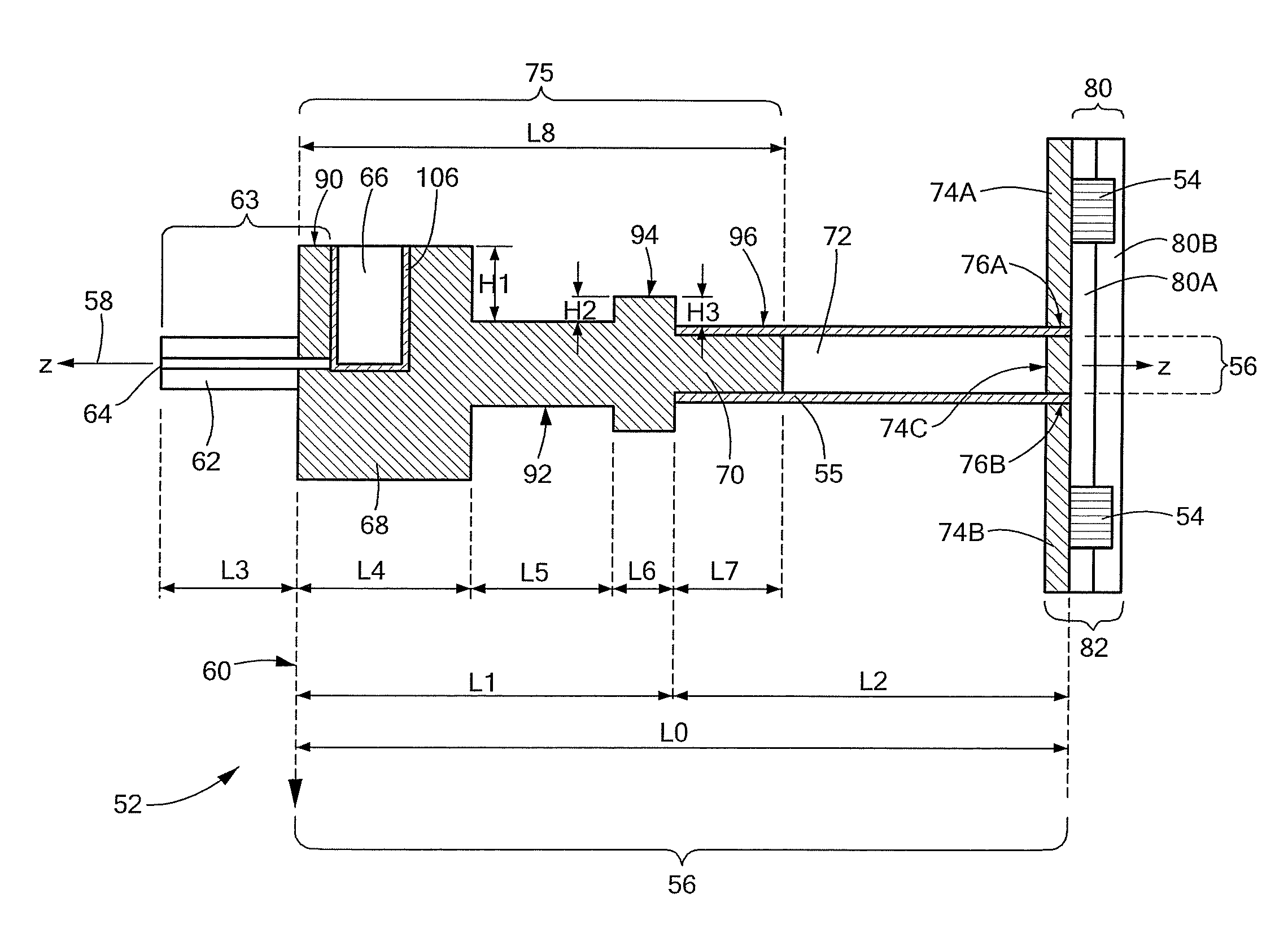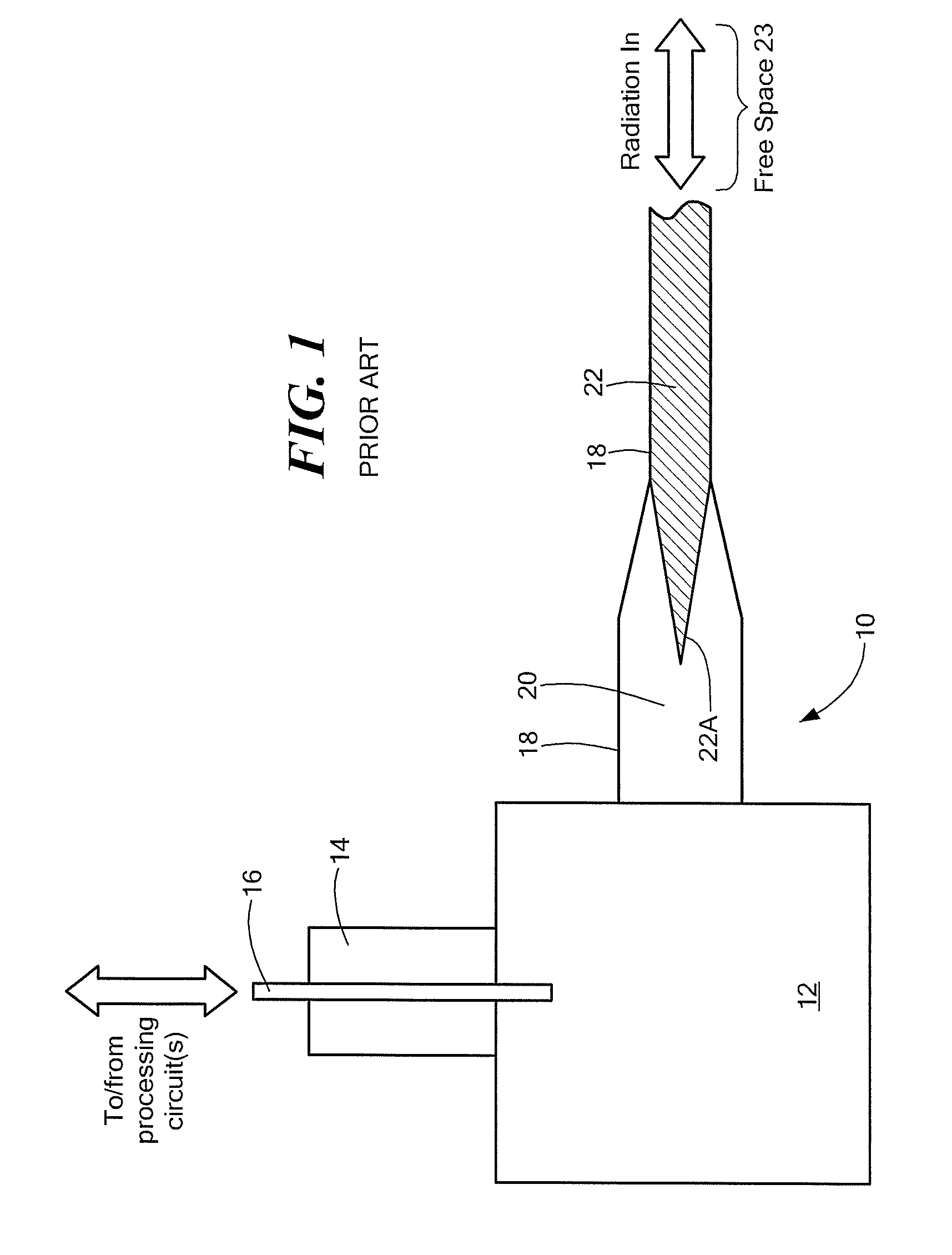Compact loaded-waveguide element for dual-band phased arrays
a phased array and loaded technology, applied in waveguides, waveguide type devices, one-port networks, etc., can solve the problems of not meeting the design attempt of dual-band phased arrays has not been found to meet all of the necessary requirements for some applications, and the limitations of high-band performan
- Summary
- Abstract
- Description
- Claims
- Application Information
AI Technical Summary
Benefits of technology
Problems solved by technology
Method used
Image
Examples
Embodiment Construction
[0051]In the following description, many dimensions, relative dimensions, etc., are expressed in terms of wavelengths, such as where λ0 (or, as applicable, λL for the low-band or λH for the high-band) is used to indicate the wavelength at the middle of the operating frequency band. As those of skill in the art are aware, the wavelength is dependent on the antenna frequency and / or frequency band in question. It is intended that the dimensions and relative dimensions given herein are applicable over a number of bands and wavelengths, and it is not intended for the invention to be limited to any particular wavelengths. For example, the embodiments of the invention can be constructed for virtually any required frequency, by scaling the size of the device based on the wavelength that corresponds to the frequency being used. Thus, if an embodiment lists an overall device length, for example, of one wavelength (λ), a first further embodiment for a device at a first frequency may be about t...
PUM
 Login to View More
Login to View More Abstract
Description
Claims
Application Information
 Login to View More
Login to View More - R&D
- Intellectual Property
- Life Sciences
- Materials
- Tech Scout
- Unparalleled Data Quality
- Higher Quality Content
- 60% Fewer Hallucinations
Browse by: Latest US Patents, China's latest patents, Technical Efficacy Thesaurus, Application Domain, Technology Topic, Popular Technical Reports.
© 2025 PatSnap. All rights reserved.Legal|Privacy policy|Modern Slavery Act Transparency Statement|Sitemap|About US| Contact US: help@patsnap.com



